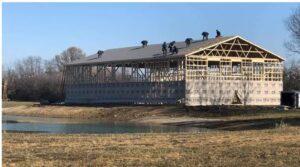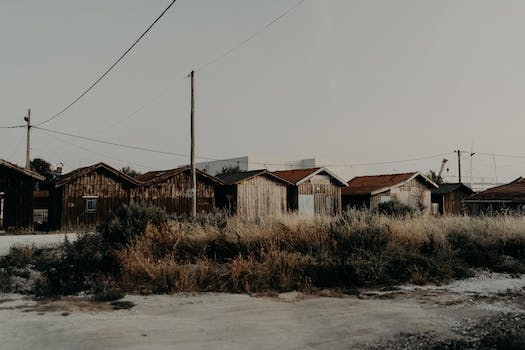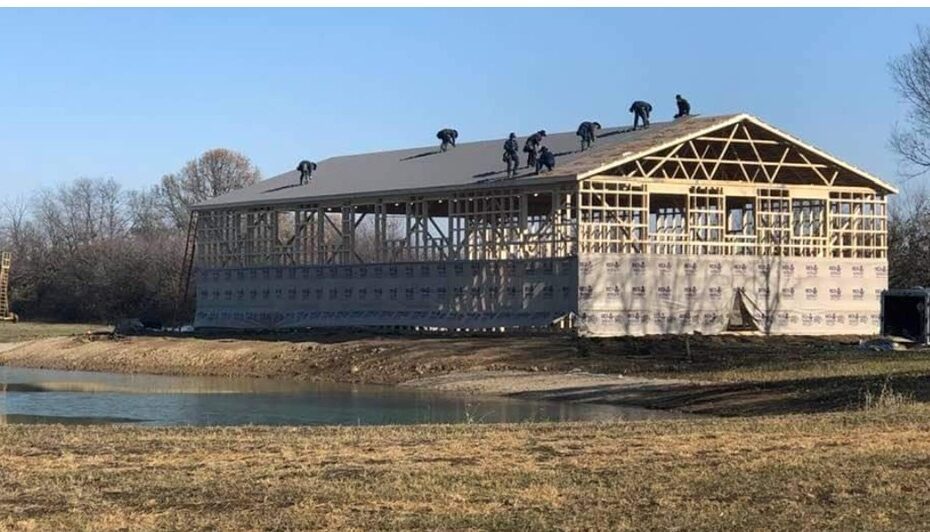Pole Barns and their Insulation Needs
Insulation for pole barns is crucial to maintain a consistent temperature inside, reduce energy costs, and protect the contents of the barn from extreme weather conditions. In this blog, we’ll delve into the importance of proper insulation for pole barns and guide you through the best insulation options available.
Understanding the Importance of Insulating a Pole Barn
Understanding the importance of insulating a pole barn is crucial for maintaining its functionality and longevity. Insulation not only helps to regulate the temperature within the barn, keeping it warm in winter and cool in summer, but also provides a barrier against moisture, which can lead to issues like mold and rot. Additionally, proper insulation can reduce noise levels, making the barn a more comfortable space to work in. If you’re using your pole barn for storage, insulation will protect your items from damage due to extreme temperatures or humidity. Therefore, considering insulation needs should be a priority when planning or maintaining your pole barn.
Best Insulation for Pole Barns
Pole barns, like any other building, require effective insulation to maintain a comfortable temperature and reduce energy costs. There are several types of insulation suitable for pole barns. Fiberglass insulation is a common choice due to its cost-effectiveness and easy installation. Reflective or radiant barrier insulation, which reflects heat away from the barn, is a great option for hotter climates. Spray foam insulation, although more expensive, provides a high R-value and excellent air sealing. Lastly, rigid foam insulation is known for its high insulating value and moisture resistance, making it ideal for pole barns in damp environments. Understanding these options can help you choose the best insulation for your pole barn.
How to Determine the Correct Insulation Level for Your Pole Barn
To determine the correct insulation level for your pole barn, first assess your barn’s usage. If it’s for storage, a lower R-value (the measure of thermal resistance) can work, such as R-13. However, if it’s used as a workspace, consider a higher R-value like R-38 to ensure comfort in colder months. Check your local building codes to ensure you meet minimum insulation requirements. Also, consider your local climate: extreme temperatures require higher R-values. Lastly, consider your budget. While higher R-value insulation may cost more upfront, it could save you money long-term in reduced heating and cooling costs.

The Role of Insulation in Energy Efficiency of Pole Barns
Insulation plays a crucial role in enhancing the energy efficiency of pole barns. Properly installed insulation not only keeps your barn warm in winter and cool in summer, but it also significantly reduces energy costs. It works by blocking heat transfer, keeping the desired temperature inside and preventing outside temperatures from affecting the interior. This means less energy is needed for heating and cooling, leading to lower energy bills. Moreover, insulation also aids in preventing condensation, thus protecting your pole barn from potential moisture damage. So, if you want to make your pole barn energy-efficient and cost-effective, investing in good quality insulation is a smart move.
The Impact of Climate on Pole Barn Insulation Needs
Climate significantly impacts the insulation needs of pole barns. In colder climates, a well-insulated pole barn is essential to prevent heat loss, reduce energy costs, and protect against freezing conditions. Conversely, in warmer climates, insulation helps to keep the interior cool by blocking out the heat, keeping the temperature inside the barn stable. Therefore, understanding your local climate and weather patterns is a crucial step when deciding on the type and amount of insulation needed for your pole barn. This will ensure optimal efficiency and comfort, regardless of the weather outside.
Exploring the Costs and Benefits of Pole Barn Insulation
Pole barn insulation is a crucial aspect to consider for maintaining temperature control and energy efficiency in your barn. The cost of insulating a pole barn can vary significantly based on the type of insulation you choose, the size of your barn, and labor costs. However, the benefits often outweigh the initial investment. Proper insulation can help to reduce your energy bills by maintaining a consistent temperature, preventing heat loss in winter and heat gain in summer. Besides, it also provides a comfortable environment for your livestock or storage items by controlling condensation and reducing noise pollution. When considering pole barn insulation, it’s important to balance the upfront costs with the long-term savings and benefits.

How To Insulate a Pole Barn
Understanding the insulation needs of your pole barn is crucial to maintain its functionality and longevity. The process begins with measuring the area to determine the amount of insulation needed. Next, you should choose the right type of insulation – typically, fiberglass or foam board insulation is used for pole barns. Once you have your materials, start from one end of the barn and gradually work your way across, ensuring the insulation is securely fastened and there are no gaps left. Finally, cover the insulation with a vapor barrier to protect it from moisture. Remember, safety is paramount, so always wear protective gear during the installation process. This step-by-step guide will help you effectively insulate your pole barn, enhancing its energy efficiency and comfort.
Common Mistakes to Avoid When Insulating a Pole Barn
When insulating a pole barn, avoid common mistakes such as not considering the climate, which can lead to inefficient insulation. For colder climates, use a higher R-value insulation to keep the barn warm. Also, don’t neglect the importance of proper sealing. Gaps and cracks can let in drafts, reducing the effectiveness of your insulation. Another common mistake is using the wrong type of insulation. Fiberglass, spray foam, and reflective insulation are among the options, but the best choice depends on your specific needs. Lastly, remember that insulation installation requires precision. Improper installation can lead to compromised insulation performance.
Maintenance and Upkeep of Pole Barn Insulation: Tips and Tricks.
Maintaining and upkeeping the insulation of your pole barn is essential to ensure its longevity and efficiency. Regular checks for any damage or wear and tear can help you spot issues early and avoid costly repairs. One handy tip is to look for any condensation, as this might indicate a problem with your insulation. Also, make sure there are no gaps or cracks in the insulation, as these can allow heat to escape, reducing your barn’s energy efficiency. If you notice any damaged areas, it’s best to replace the insulation immediately. Remember, using high-quality insulation and installing it properly can significantly reduce future maintenance needs.
